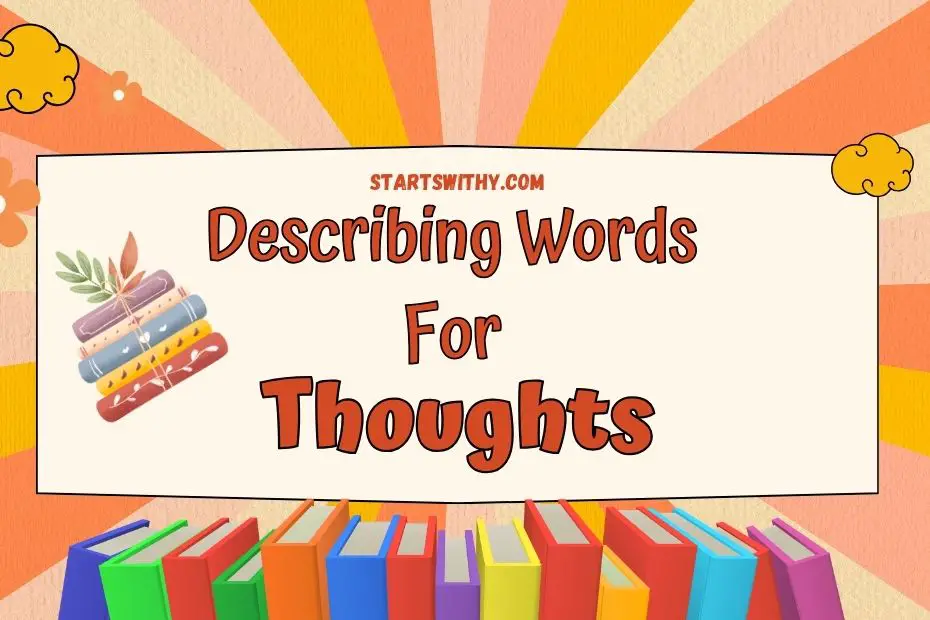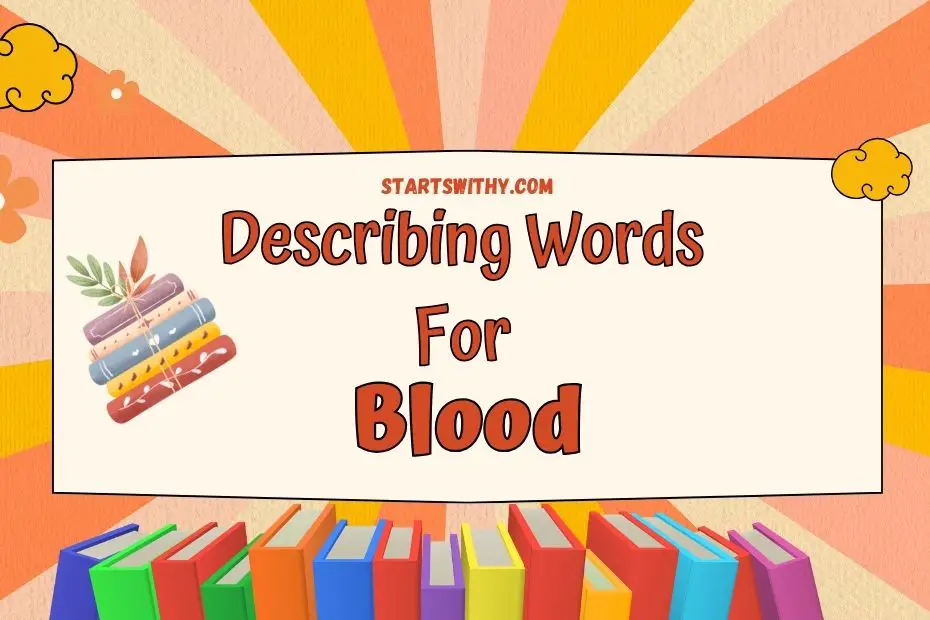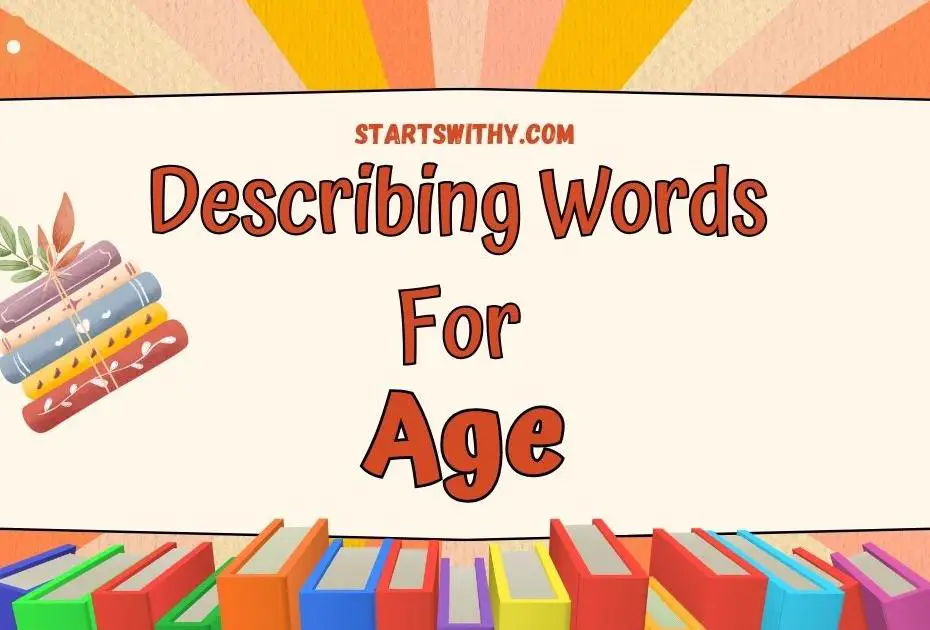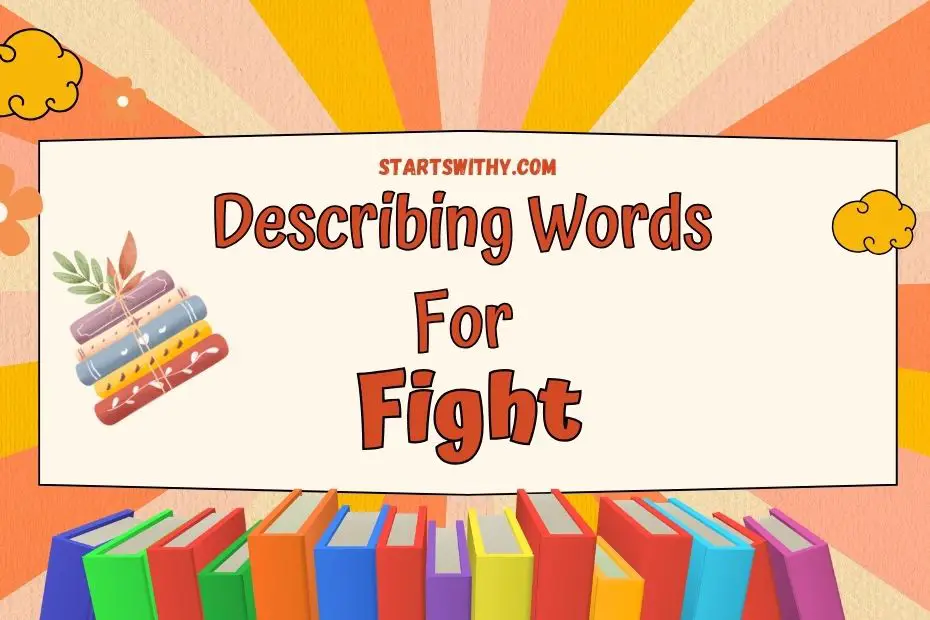When it comes to expressing our thoughts, words have the power to paint a vivid picture of our innermost musings. Whether we’re feeling elated, contemplative, or somewhere in between, adjectives play a crucial role in conveying the nuances of our thoughts. In this article, I’ll be exploring a range of adjectives that can be used to describe thoughts, providing you with examples that will help you articulate your inner world with precision and flair.
Thoughts can be fleeting, complex, and ever-evolving. They can be filled with joy, confusion, or even a touch of melancholy. By using the right adjectives, we can effectively capture the essence of our thoughts and convey them to others in a way that resonates. From “whimsical” to “profound,” “reflective” to “intriguing,” I’ll delve into a variety of descriptive words that will enable you to express your thoughts with depth and clarity.
So, whether you’re a writer aiming to create captivating characters or someone simply looking to articulate your own thoughts more effectively, join me as we explore the world of adjectives for thoughts. By the end of this article, you’ll have a rich vocabulary at your disposal, empowering you to paint a vivid picture of your innermost musings. Let’s dive in and discover the power of descriptive words when it comes to expressing our thoughts.
How to Describe thoughts? – Different Scenarios
Now that we understand the importance of using adjectives to describe thoughts, let’s explore how we can effectively articulate our thoughts in different scenarios.
1. Describing Happy Thoughts
When it comes to describing happy thoughts, we can use a wide range of adjectives to convey the joy and positivity we feel. Here are some examples:
| Adjective | Definition | Example |
|---|---|---|
| Ecstatic | Extremely happy or excited | I felt ecstatic when I heard the good news. |
| Elated | Overjoyed or thrilled | Winning the game made me elated. |
| Blissful | Complete happiness or joy | The serene beach view was blissful. |
2. Describing Sad Thoughts
On the other end of the spectrum, sad thoughts require a different set of adjectives to express feelings of sorrow or melancholy. Take a look at these examples:
| Adjective | Definition | Example |
|---|---|---|
| Heartbroken | Overwhelmed with sadness | I was heartbroken when I heard the news. |
| Melancholic | A deep feeling of sadness | The rainy weather made me feel melancholic. |
| Desolate | Feeling abandoned or lonely | The empty house felt desolate. |
3. Describing Confused Thoughts
Sometimes, our thoughts can be filled with confusion and uncertainty. In such situations, using descriptive adjectives can help convey the sense of puzzlement or bewilderment. Here are a few examples:
| Adjective | Definition | Example |
|---|---|---|
| Baffled | Confused or perplexed | I was completely baffled by the riddle. |
| Disoriented | Confused and lacking direction | The maze left me feeling disoriented. |
| Frazzled | Mentally exhausted and confused | The complicated instructions had me feeling frazzled. |
Remember, the choice of adjectives may vary depending on the specific scenario or the depth of the emotion being experienced. By selecting the appropriate adjectives, we can effectively describe our thoughts and emotions, allowing others to better understand our inner world.
Describing Words for thoughts in English
When it comes to expressing our thoughts and feelings, adjectives play a crucial role. They add depth, emotion, and nuance to our language. In this section, I will provide you with a range of adjectives that can be used to describe thoughts in English. These words are perfect for teaching young kids about emotions and helping them expand their vocabulary. Here are some of the most commonly used describing words for thoughts:
- Happy: joyful, delighted, pleased, excited
- Sad: unhappy, gloomy, downcast, sorrowful
- Confused: puzzled, bewildered, disoriented, uncertain
- Calm: peaceful, relaxed, composed, serene
- Curious: inquisitive, eager, interested, fascinated
- Nervous: anxious, worried, apprehensive, jittery
By incorporating these adjectives into their language, kids can better express their thoughts and emotions. For example, instead of simply saying “I’m happy,” they could say “I’m joyful” or “I’m delighted.” This allows them to convey a more precise and vivid picture of their emotions to others.
Teaching adjectives for thoughts not only helps children develop their language skills but also encourages them to be more introspective and reflective. They learn to identify and articulate their own emotions, as well as understand and empathize with the feelings of others.
To further illustrate the use of these adjectives, here are some examples:
| Emotion | Describing Words |
|---|---|
| Happy | joyful, delighted, pleased, excited |
| Sad | unhappy, gloomy, downcast, sorrowful |
| Confused | puzzled, bewildered, disoriented, uncertain |
| Calm | peaceful, relaxed, composed, serene |
| Curious | inquisitive, eager, interested, fascinated |
| Nervous | anxious, worried, apprehensive, jittery |
Using these adjectives, children can create a more vivid and expressive picture of their thoughts and emotions. Encourage them to expand their vocabulary and experiment with different adjectives to capture the subtleties of their inner world.
Remember, language is a powerful tool, and by teaching kids to use adjectives effectively, we are equipping them with the ability to communicate their thoughts and emotions with clarity and precision.
Adjectives for thoughts
Positive Adjectives for Thoughts with 12 Example Sentences
When it comes to describing our thoughts, positive adjectives can help convey a range of emotions, from happiness and excitement to confidence and contentment. Here are some positive adjectives that can be used to describe thoughts, along with example sentences:
| Adjective | Example Sentence |
|---|---|
| Joyful | I’m feeling joyful about my upcoming birthday party. |
| Optimistic | I’m optimistic that I’ll do well on the math test. |
| Grateful | I’m grateful for all the support I received. |
| Inspired | I’m feeling inspired to start a new art project. |
| Confident | I’m confident that I can accomplish my goals. |
| Content | I’m content with the progress I’ve made so far. |
Of course, there are many more positive adjectives that can be used to describe thoughts. These examples are just a starting point. Encourage children to explore different words and experiment with them to capture the subtleties of their thoughts and emotions.
Negative Adjectives for Thoughts with 5 Example Sentences
Negative adjectives can also be useful in describing thoughts that are less than pleasant. They can help children express feelings of sadness, frustration, or disappointment. Here are some negative adjectives that can be used to describe thoughts, along with example sentences:
| Adjective | Example Sentence |
|---|---|
| Worried | I’m worried about the upcoming test. |
| Frustrated | I’m frustrated that I can’t find my favorite toy. |
| Sad | I’m feeling sad because my friend is moving away. |
| Disappointed | I’m disappointed that the party was canceled. |
| Anxious | I’m anxious about starting a new school. |
It’s important to teach children that it’s okay to have negative thoughts and emotions. By providing them with the vocabulary to express these feelings, we can help them better understand and cope with their experiences.
Remember, this is not an exhaustive list of negative adjectives. Encourage children to explore more words to describe their thoughts and feelings.
By incorporating positive and negative adjectives into their language, children can better express their thoughts and emotions, allowing them to convey a more precise and vivid picture of their inner world. Teaching adjectives for thoughts not only helps children develop their language skills but also encourages them to be more introspective and reflective.
Synonyms and Antonyms with Example Sentences
Synonyms for thoughts
When it comes to describing thoughts, there are a variety of adjectives that can be used interchangeably. Here are some synonyms for thoughts along with example sentences:
| Synonym | Example Sentence |
|---|---|
| Ideas | I have so many ideas for my art project! |
| Notions | He had notions of becoming an astronaut. |
| Opinions | What are your opinions on the new movie? |
| Beliefs | I hold strong beliefs about the importance of education. |
| Impressions | My first impression of the new teacher was favorable. |
By using these synonyms, we can add more depth and variety to our descriptions of thoughts. Encouraging children to explore different words can help expand their vocabulary and improve their language skills.
Antonyms for thoughts
Sometimes, it’s important to describe not only positive thoughts, but also negative thoughts. Here are some antonyms for thoughts, along with example sentences:
| Antonym | Example Sentence |
|---|---|
| Doubts | I have doubts about his ability to complete the task. |
| Misgivings | I had misgivings about taking that route. |
| Disapproval | Her parents expressed disapproval over her career choice. |
| Dissatisfaction | He voiced his dissatisfaction with the service he received. |
| Skepticism | There was skepticism among the group about his claims. |
Including antonyms in our language allows us to paint a more complete picture of our thoughts and emotions. Teaching children that it’s okay to have negative thoughts and emotions can foster introspection and emotional intelligence.
Incorporating these synonyms and antonyms into our vocabulary can help us express our thoughts more precisely and vividly. By providing children with a wide range of adjectives to describe their thoughts, we empower them to be introspective and reflective individuals.
Conclusion
Incorporating adjectives into our language is a powerful way to enhance our descriptions of thoughts. By using synonyms and antonyms, we can add depth and nuance to our expressions. Teaching children these descriptive words not only expands their vocabulary, but also strengthens their language skills.
It’s important to remember that negative thoughts and emotions are a natural part of life. By teaching children that it’s okay to have these feelings, we empower them to express themselves authentically. Negative adjectives provide a way to describe these thoughts, helping children navigate their emotions and develop emotional intelligence.
The use of adjectives for thoughts is a valuable tool for language development, introspection, and emotional intelligence. By incorporating these descriptive words into our daily conversations, we can enrich our understanding of our own thoughts and emotions. Let’s embrace the power of adjectives and encourage a deeper connection with our inner selves.



